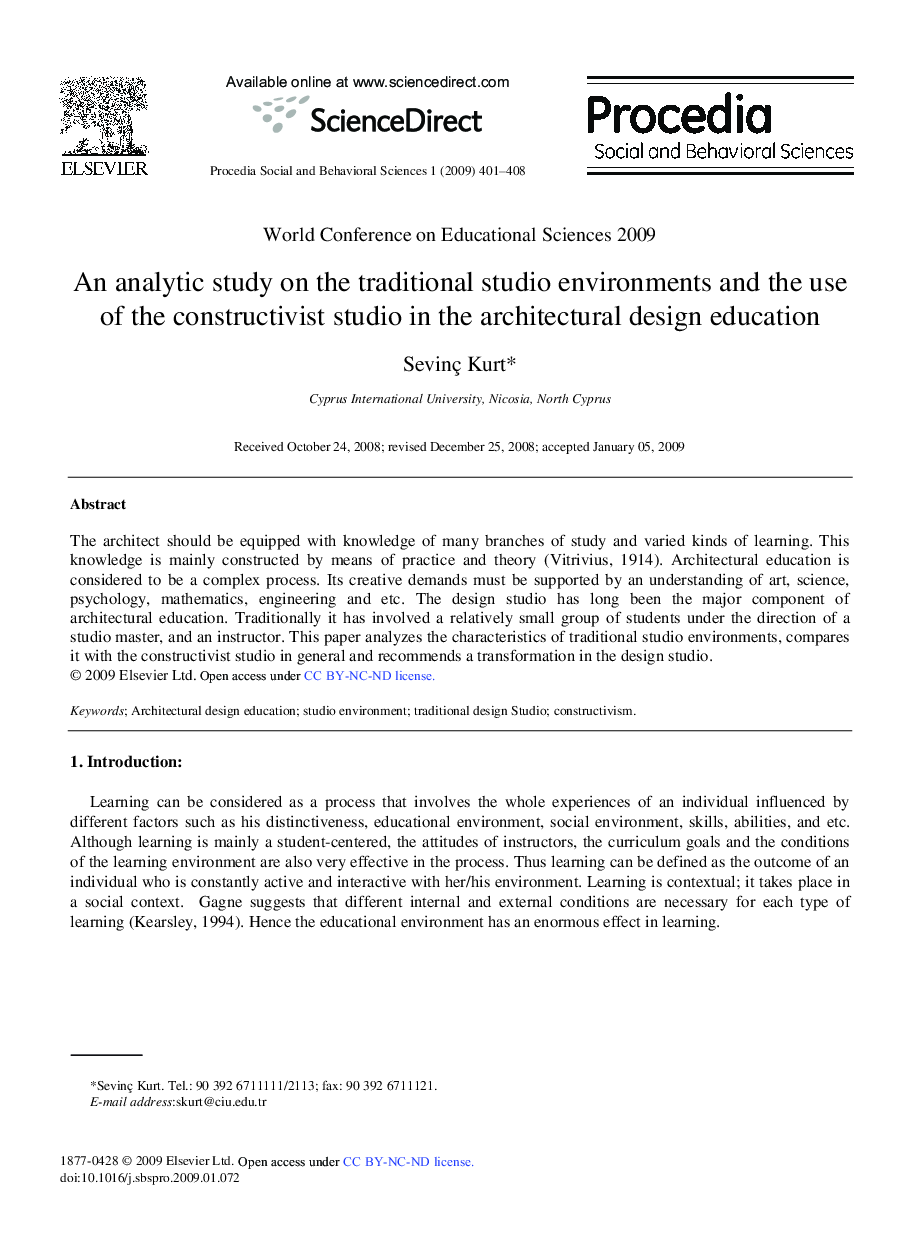| Article ID | Journal | Published Year | Pages | File Type |
|---|---|---|---|---|
| 1125367 | Procedia - Social and Behavioral Sciences | 2009 | 8 Pages |
The architect should be equipped with knowledge of many branches of study and varied kinds of learning. This knowledge is mainly constructed by means of practice and theory (Vitrivius, 1914). Architectural education is considered to be a complex process. Its creative demands must be supported by an understanding of art, science, psychology, mathematics, engineering and etc. The design studio has long been the major component of architectural education. Traditionally it has involved a relatively small group of students under the direction of a studio master, and an instructor. This paper analyzes the characteristics of traditional studio environments, compares it with the constructivist studio in general and recommends a transformation in the design studio.
